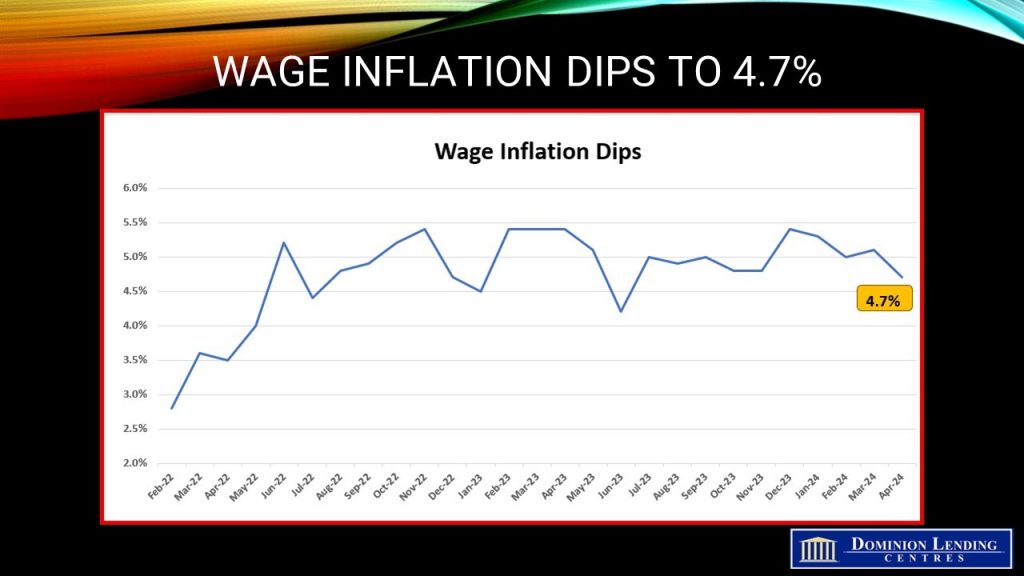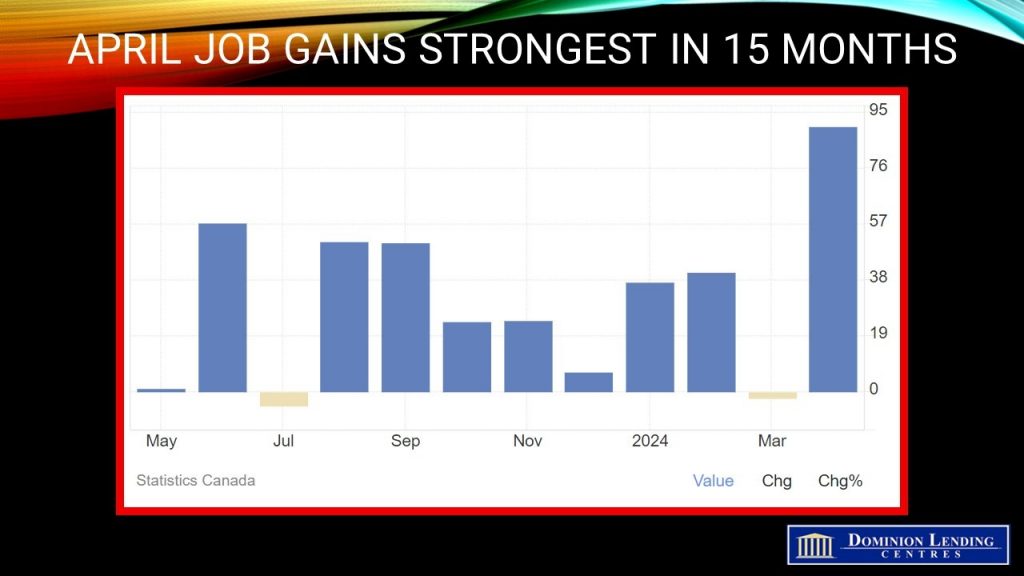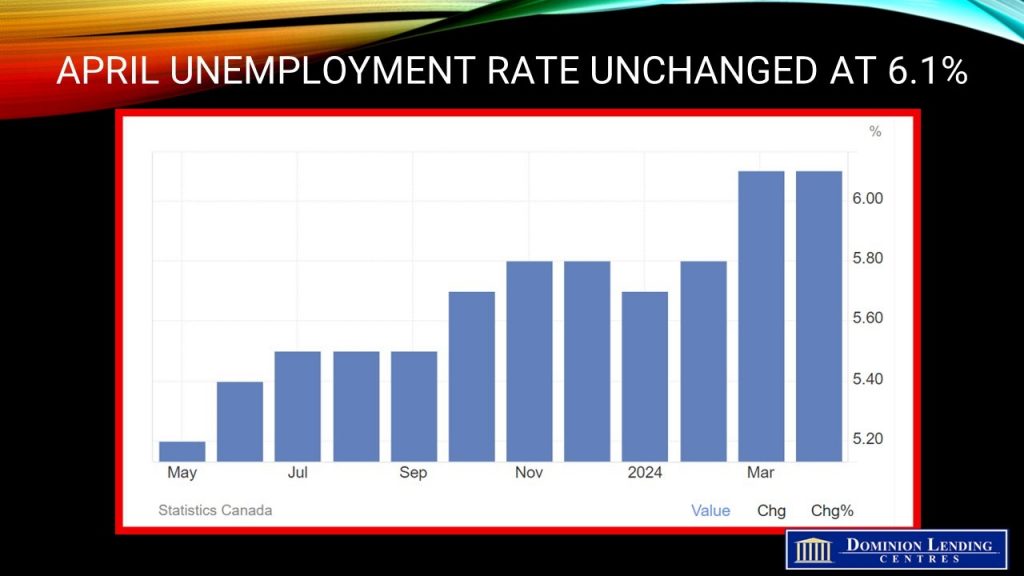Articles
Posted on May 10, 2024
April’s Strong Job Gains Likely Postpone Rate Cuts Until July
Today’s StatsCanada Labour Force Survey for April blindsided economists by coming in much more robust than expected. Employment in Canada rose a whopping 90,400 in April, the most in 15 months, following a decline in March, surpassing forecasts by a large margin. Substantial job gains were posted in both full-time and part-time work.
After four months of little change, private sector jobs finally took the lead in April. Employment gains were widespread across various industries within the services-producing sector, particularly in professional, scientific and technical services (+26,000; +1.3%), accommodation and food services (+24,000; +2.2%), health care and social assistance (+17,000; +0.6%) and natural resources (+7,700; +2.3%). However, there were declines in the goods-producing sector, notably utilities (-5,000; -3.1%).
Across Canadian provinces, employment increased in Ontario (+25,000; +0.3%), British Columbia (+23,000; +0.8%), Quebec (+19,000 +0.4%) and New Brunswick (+7,800; +2.0%).
Despite the surge in net new jobs, the unemployment rate remained steady at 6.1%. The jobless rate in April was up 1.0 percentage points from a year ago.
Average hourly wages among employees rose 4.7% in April, down meaningfully from the 5.1% pace in March. This is good news for the Bank of Canada and keeps the door open to rate cuts, probably in July. The overall strength of today’s report gives the Bank breathing room to postpone the next rate cut from June to July.

Bottom Line
The central bank meets again on June 5. The April CPI report will be released on May 21. This is by far the most important economic report for the Bank. They will look at the three-month trend in the core inflation measures. These figures have already fallen sharply, but given the strength in the jobs report, the central bank will likely wait another month before they begin cutting interest rates.

